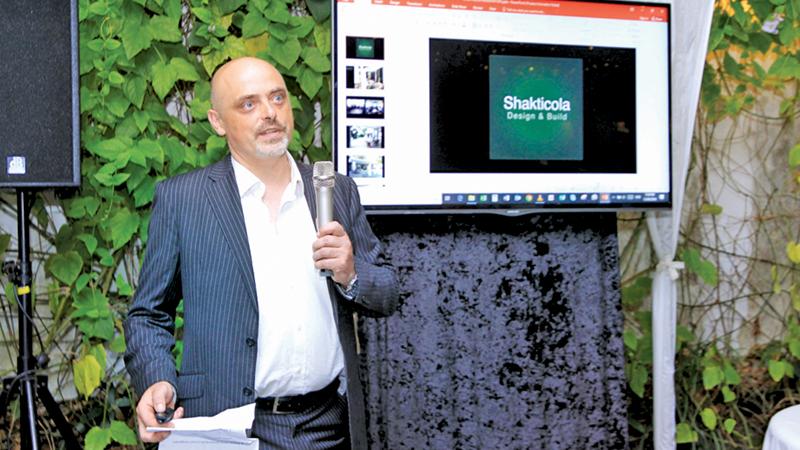
Co-Director of Tamba Villas, a project to construct 37 luxury villas in Thalpe, Trevor Morgan, who has been running an architectural design and construction project management practice in Sri Lanka has vast experience in tropical construction.
“We have experienced the whole process from design through to delivery, and then hoovering up issues after our clients start using their properties”.
The following are the 10 most important lessons he has learnt while constructing in Sri Lanka and what Tamba Villas have incorporated into their buildings.
Lesson 1: The principle reason for owning a house in the tropics is to have a home you can enjoy. This may sound like a strange lesson to start off with and I call it my principle lesson, but I think it has to be the guiding principle of designing and constructing in Sri Lanka.
Most of my career, I have worked in cities where practical considerations generally override, but in stark contrast, the only reason you would desire a home here in Sri Lanka is to derive pleasure from its use and ownership.
For the projects we have delivered, that has meant ensuring the property is beautiful, functional and well-designed, along with ensuring the actual construction process is enjoyable.
Lesson 2: You need to understand local materials and local skills. Tamba Villas is now into the hard-core construction stuff. In Sri Lanka, they don’t have access to the massive spectrum of materials and products available in the international market.
On the other side, there are also skills that make things possible here that would be extremely challenging or expensive to achieve in other countries.
The important lesson here is to ensure that from a cost and practical perspective, that your design work is achievable and deliverable within the Sri Lankan environment. Going outside the envelope can cause considerable issues.
Lesson 3: Sri Lanka has a high maintenance environment. Hence it is essential you design for maintenance. Sri Lanka requires far more maintenance than in any other place that he has worked.
This is down to a number of factors, humidity, bright sunlight, very active termites and monsoon rains. Therefore, we need to specify products that can withstand the environment, and everything you specify must be easily sourced, so as to not cause issues when the need for replacement arises.
Lesson 4: One should carefully and stringently assess the contractor. This is probably a good guiding principle wherever you are constructing as I found this to be a key success factor that I cannot overstress.
The only reason anyone would pay the premium to use a company such as ourselves to oversee the construction is the expectation that we can deliver a project to an internationally acceptable standard, in terms of aesthetics, timing, construction quality, materials, specification and finish.
To deliver on all the aspects, we have to ensure that the contractor has the ability to meet these measures at the required standard. If you thoroughly vet your contractor and make sure they can demonstrate, and ensure they have already delivered projects to the required standard, kept their previous clients happy, and that they have the available experienced management for your project, you are 90% of the way there to delivering the project successfully.
On the flip side, if your contractor is not capable of the standard required, you need to strap yourself in for a very rough ride.
Lesson 5: Be highly conscious where you spend your money. There are a few areas of a building where a good budget makes a huge difference. For example, floor finishes, internal pool finishes, doors and windows are things that can consume a chunk off the budget, and would not make much of a difference to the finished project.
The main culprit in my experience is having frivolous design details. When specifying a building, you always need to make sure that you use your budget where it counts.
Lesson 6: Integrity and transparency are essential. When you work on a construction project, the team will be working together for at least two years, so it is important that the team works well together, and most importantly you should never forget that the team includes the client.
To give your team complete confidence, they must trust you in terms of both honesty and competence. Maintaining a good relationship with the client is also of vital importance.
The client needs to trust you, and your decisions and they must know and trust that you will protect their interests at all times.
Lesson 7: Be on the site every day. One of the main reasons they have been successful in managing construction projects here in Sri Lanka is that they maintain a daily presence on site.
This helps from many angles, as it helps maintain a close relationship with the people actually constructing the project, it helps the flow of the project as queries can be dealt with on the spot, and any issues can be caught before significant impact is caused.
Lesson 8: Specify in great detail and stay ahead of the construction. It is far better to deal with the issues before they actually arise wherever possible, as this saves an immense amount of time and money. For this reason, we give very clear drawings for all the details on our projects which leave very little room for misinterpretation.
Lesson 9: Carefully chose the site manager. The contractor’s site manager is the guy who actually builds the project on the ground. The selection of the site manager should be an integral part of choosing the contractor.
Lesson 10: The most important lesson is to be available. You never want anyone on the project to think you are too busy or too unapproachable to deal with them, as many things can go wrong when people are too afraid. to ask a question.
